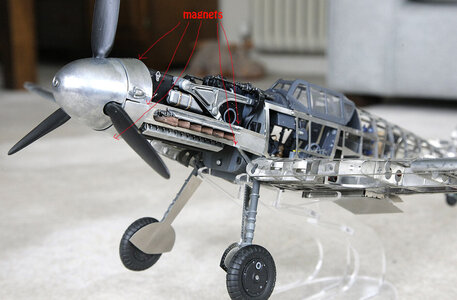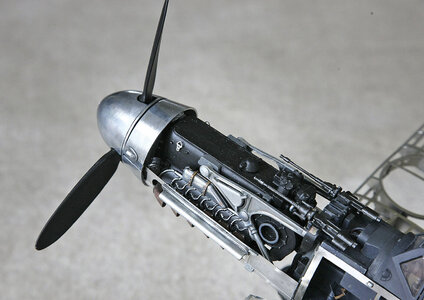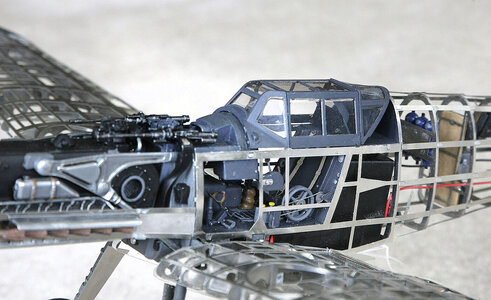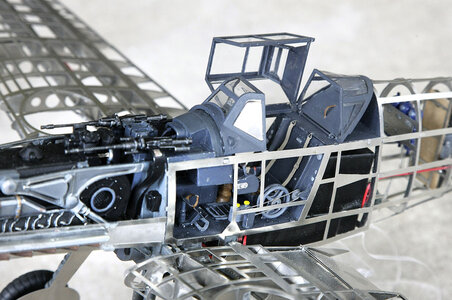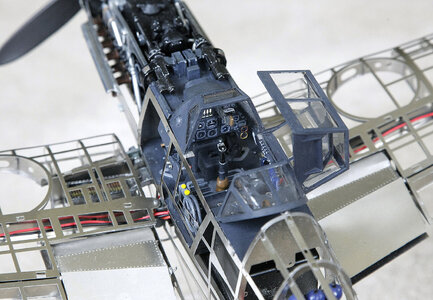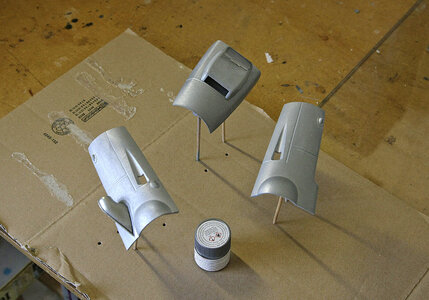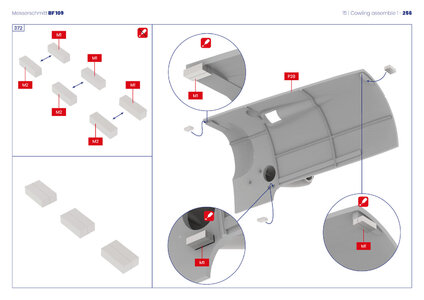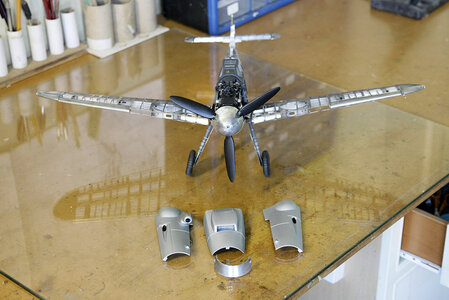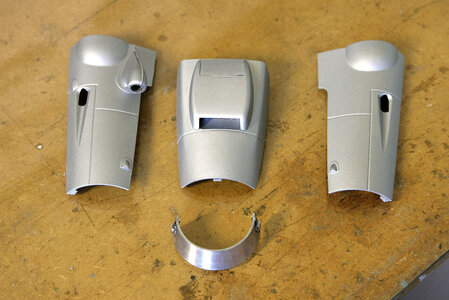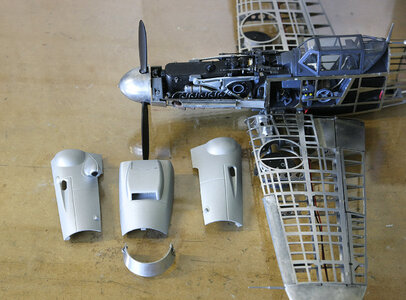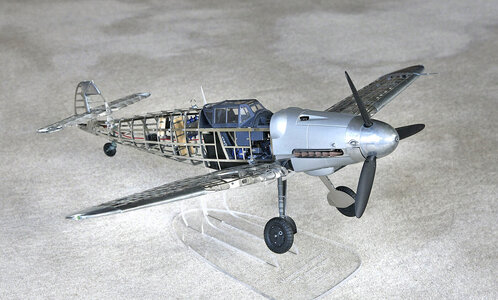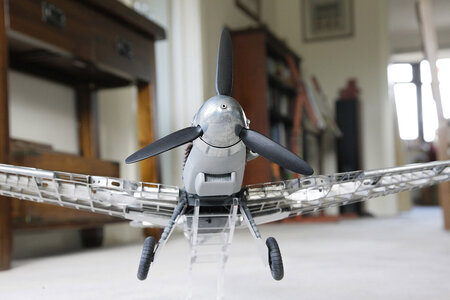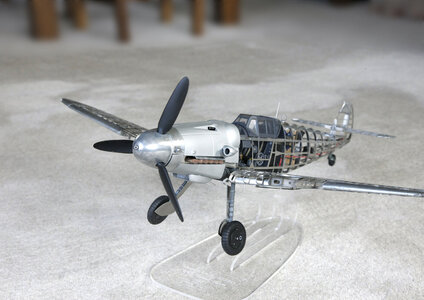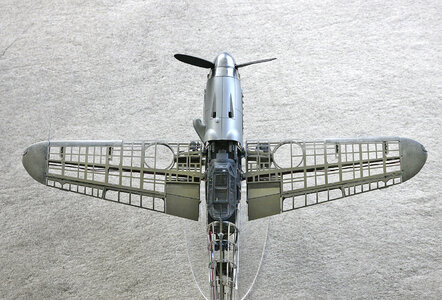Hello everyone. Thanks again for your likes and comments. It’s officially finished so this will be my final post. I’m delighted with the result, better than I’d expected.
I finished preparing the engine panels ready for painting then had another go at the magnets to get as close a fit as I could. The fit was influenced by the flow of the magnetic field, when in place they moved slightly to align with the natural flow of the field, only a very small amount but enough not to be a tight butt against each other. What I did was remove the magnets from one panel and placed them against the magnets on the other panel and let them find their natural position. I fitted this panel into place, I put a dab of cyno on the opposite panel then fitted that one pressing it onto its magnet holding it tightly into place until the glue set. Now when the panels are put on they settle into the natural pull of the magnets which is tight against each other, I hope you understand that explanation.
The next job was painting. I use an airbrush and for the paint I chose Tamiya acrylic aluminium and for the primer I used Vallejo, again acrylic. I got a good surface but the colour looked wrong, it was light and too bright. I rummaged through my old stash and found a tin of silver Humbrol enamel which must be about 25 years old but after a good stir it looked ok. I’d never sprayed with enamel before, I only ever use it with a brush but thought that I had nothing to loose so I gave it a try. I thinned it with an enamel thinner about 50/50 and gave it two light coats leaving about four hours in between. I was surprised at the result, I ended up with probably the most perfect finish that I’ve ever had, it’s the right shade, not shiny but not matt either, don’t you feel good when you get something exactly right that you hadn’t quite expected.
This has been a very different type of build for me and an enjoyable one. It is a very good kit and Artesania must be congratulated on taking on what must have been a risky and expensive project to give the modeling fraternity something like this.
Anyway this will be my last post, I’m going to now take a short break.
View attachment 233586
View attachment 233587
View attachment 233588
View attachment 233589
View attachment 233590
View attachment 233591
View attachment 233592






